Top Rankings
Lake Tahoe Unified School District ranks among the top 20% of public school district in California for:
Category
Attribute
Community Size
Largest student body (number of students) (Top 1%)
For the 2025 school year, there is 1 public middle school serving 765 students in Lake Tahoe Unified School District. This district's average middle testing ranking is 5/10, which is in the bottom 50% of public middle schools in California.
Public Middle School in Lake Tahoe Unified School District have an average math proficiency score of 25% (versus the California public middle school average of 31%), and reading proficiency score of 38% (versus the 46% statewide average).
Minority enrollment is 54% of the student body (majority Hispanic), which is less than the California public middle school average of 78% (majority Hispanic).
Overview
This School District
This State (CA)
# Schools
7 Schools
3,501 Schools
# Students
3,528 Students
1,854,363 Students
# Teachers
173 Teachers
87,821 Teachers
Student : Teacher Ratio
20:1
20:1
District Rank
Lake Tahoe Unified School District, which is ranked #912 of all 1,925 school districts in California (based off of combined math and reading proficiency testing data) for the 2021-2022 school year.
The school district's graduation rate of 92% has increased from 85% over five school years.
Overall District Rank
#899 out of 1941 school districts
(Top 50%)
(Top 50%)
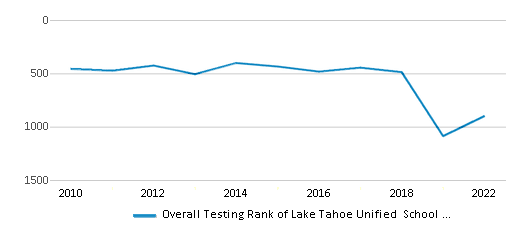
Math Test Scores (% Proficient)
28%
33%

Reading/Language Arts Test Scores (% Proficient)
44%
47%
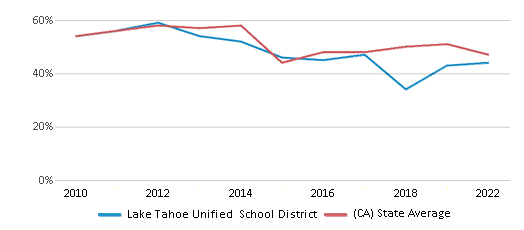
Science Test Scores (% Proficient)
29%
29%
Graduation Rate
92%
87%
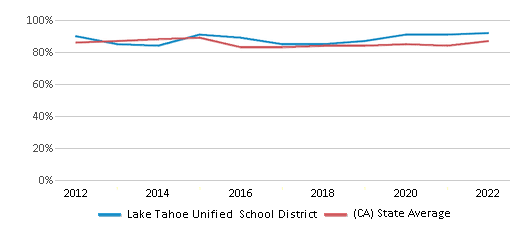
Students by Ethnicity:
Diversity Score
0.59
0.64
# American Indian Students
12 Students
9,887 Students
% American Indian Students
1%
1%
# Asian Students
122 Students
201,760 Students
% Asian Students
4%
11%
# Hispanic Students
1,621 Students
1,009,980 Students
% Hispanic Students
46%
55%
# Black Students
9 Students
97,908 Students
% Black Students
n/a
5%
# White Students
1,595 Students
413,325 Students
% White Students
45%
22%
# Hawaiian Students
6 Students
7,600 Students
% Hawaiian Students
n/a
n/a
# Two or more races Students
152 Students
109,003 Students
% of Two or more races Students
4%
6%
Students by Grade:
# Students in PK Grade:
-
83
# Students in K Grade:
347
90,358
# Students in 1st Grade:
254
70,728
# Students in 2nd Grade:
263
73,359
# Students in 3rd Grade:
232
73,090
# Students in 4th Grade:
263
76,068
# Students in 5th Grade:
232
82,191
# Students in 6th Grade:
230
289,122
# Students in 7th Grade:
263
439,549
# Students in 8th Grade:
272
441,705
# Students in 9th Grade:
290
59,696
# Students in 10th Grade:
292
51,846
# Students in 11th Grade:
295
51,149
# Students in 12th Grade:
295
55,419
# Ungraded Students:
-
-
District Revenue and Spending
The revenue/student of $16,376 in this school district is less than the state median of $19,974. The school district revenue/student has grown by 5% over four school years.
The school district's spending/student of $15,402 is less than the state median of $18,396. The school district spending/student has grown by 5% over four school years.
Total Revenue
$58 MM
$116,387 MM
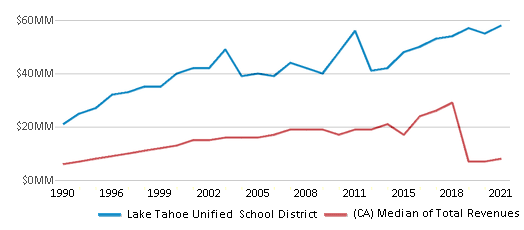
Spending
$54 MM
$107,188 MM
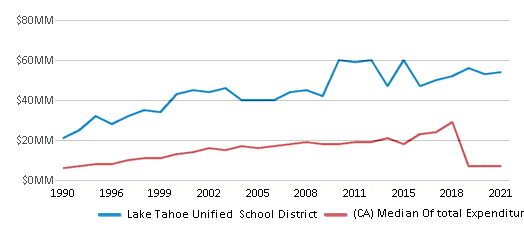
Revenue / Student
$16,376
$19,974
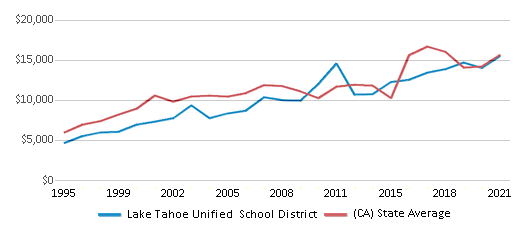
Spending / Student
$15,402
$18,396
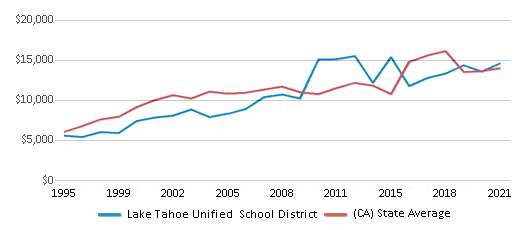
Best Lake Tahoe Unified School District Public Middle Schools (2025)
School
(Math and Reading Proficiency)
(Math and Reading Proficiency)
Location
Grades
Students
Rank: #11.
South Tahoe Middle School
(Math: 25% | Reading: 38%)
Rank:
Rank:
5/
Bottom 50%10
2940 Lake Tahoe Blvd.
South Lake Tahoe, CA 96150
(530) 541-6404
South Lake Tahoe, CA 96150
(530) 541-6404
Grades: 6-8
| 765 students
Recent Articles

Year-Round Or Traditional Schedule?
Which is more appropriate for your child? A year-round attendance schedule or traditional schedule? We look at the pros and cons.

Why You Should Encourage Your Child to Join a Sports Team
Participating in team sports has a great many benefits for children, there is no doubt. In this article you will learn what those benefits are.

White Students are Now the Minority in U.S. Public Schools
Increasing birth rates among immigrant families from Asia and Central and South America, combined with lower birth rates among white families, means that for the first time in history, public school students in the United States are majority-minority. This shift in demographics poses difficulties for schools as they work to accommodate children of varying language abilities and socio-economic backgrounds.





